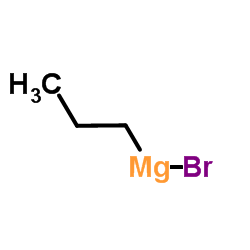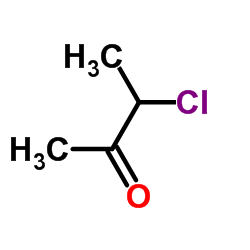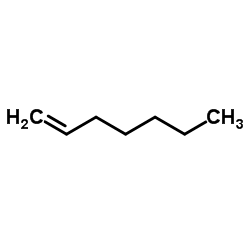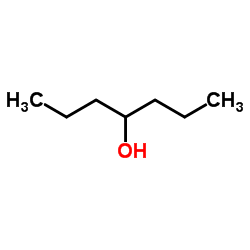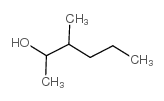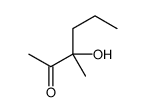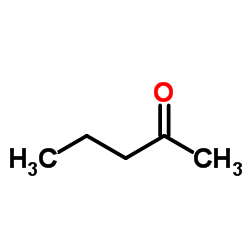17618-77-8
| Name | 3-methylhex-2-ene |
|---|---|
| Synonyms |
3-methyl-2-hexene
3-methyl-hex-2-ene 3-Methyl-2-hexene 2-Hexene,3-methyl 3-Methyl-hex-2-en |
| Density | 0.714g/cm3 |
|---|---|
| Boiling Point | 97.3ºC at 760mmHg |
| Molecular Formula | C7H14 |
| Molecular Weight | 98.18610 |
| Exact Mass | 98.10960 |
| LogP | 2.75270 |
|
Section I.Chemical Product and Company Identification Chemical Name3-Methyl-2-hexene (cis- and trans- mixture) Portland OR SynonymNot available. Chemical FormulaCH3(CH2)2C(CH3):CHCH3 CAS Number17618-77-8
Section II.Composition and Information on Ingredients Toxicology Data Chemical NameCAS Number Percent (%)TLV/PEL 3-Methyl-2-hexeneMin. 95.0 Not available.Not available. 17618-77-8 (cis- and trans- mixture) (GC) Section III. Hazards Identification Acute Health EffectsNo specific information is available in our data base regarding the toxic effects of this material for humans. However, exposure to any chemical should be kept to a minimum. Skin and eye contact may result in irritation. May be harmful if inhaled or ingested. Always follow safe industrial hygiene practices and wear proper protective equipment when handling this compound. Chronic Health EffectsCARCINOGENIC EFFECTS : Not available. MUTAGENIC EFFECTS : Not available. TERATOGENIC EFFECTS : Not available. DEVELOPMENTAL TOXICITY: Not available. Repeated or prolonged exposure to this compound is not known to aggravate existing medical conditions. Section IV.First Aid Measures Eye ContactCheck for and remove any contact lenses. In case of contact, immediately flush eyes with plenty of water for at least 15 minutes. Get medical attention. Skin ContactIn case of contact, immediately flush skin with plenty of water. Remove contaminated clothing and shoes. Wash clothing before reuse. Thoroughly clean shoes before reuse. Get medical attention. InhalationIf the victim is not breathing, perform mouth-to-mouth resuscitation. Loosen tight clothing such as a collar, tie, belt or waistband. If breathing is difficult, oxygen can be administered. Seek medical attention if respiration problems do not improve. IngestionINDUCE VOMITING by sticking finger in throat. Lower the head so that the vomit will not reenter the mouth and throat. Loosen tight clothing such as a collar, tie, belt or waistband. If the victim is not breathing, perform mouth-to-mouth resuscitation. Examine the lips and mouth to ascertain whether the tissues are damaged, a possible indication that the toxic material was ingested; the absence of such signs, however, is not conclusive. SEEK IMMEDIATE MEDICAL ATTENTION in case of ingestion of a radioactive material. Section V. Fire and Explosion Data Not available. Flammable.Auto-Ignition Flammability Flammable Limits Flash PointsNot available. Not available. Combustion ProductsThese products are toxic carbon oxides (CO, CO 2). Fire Hazards Reactive with strong oxidizers. Vapors may travel to source of ignition and flash back. Closed containers may explode from heat of a fire. Highly flammable in presence of open flames nad sparks, of heat. Explosion HazardsRisks of explosion of the product in presence of mechanical impact: Not available. Risks of explosion of the product in presence of static discharge: Not available. Fire Fighting Media SMALL FIRE: Use DRY chemical powder. and InstructionsLARGE FIRE: Use water spray, fog or foam. DO NOT use water jet. Continued on Next Page Chemical Product (cis- and trans- mixture) Section VI.Accidental Release Measures Spill Cleanup Flammable material. In case of a spill and/or a leak, always shut off any sources of ignition, ventilate the area, and excercise caution. Use a Instructions shovel to put material into a convenient waste disposal container. Finish cleaning the spill by rinsing any contaminated surfaces with copious amounts of water. Consult federal, state and/or local authorities for assistance on disposal. Section VII. Handling and Storage Handling and StorageFLAMMABLE. Keep away from heat. Mechanical exhaust required. Avoid excessive heat and light. Do not breathe gas/fumes/ vapor/spray. Information Always store away from incompatible compounds such as oxidizing agents. Reactive with strong oxidizers; may be ignited by heat, sparks or flames. Vapors may travel to source of ignition and flash back. Closed containers may explode from heat of a fire. Empty containers may pose a fire risk. Evaporate residue under a fume hood if possible. Ground all equipment containing material. Handle with caution and minimize exposure. Keep away from heat and sources of ignition. Tightly seal container and store in a cool, dry place. Use only non-sparking hand tool when handling this product. Section VIII. Exposure Controls/Personal Protection Engineering ControlsProvide exhaust ventilation or other engineering controls to keep the airborne concentrations of vapors below their respective threshold limit value. Ensure that eyewash station and safety shower is proximal to the work-station location. Personal ProtectionSplash goggles. Lab coat. Vapor respirator. Boots. Gloves. Be sure to use a MSHA/NIOSH approved respirator or equivalent. Suggested protective clothing might not be sufficient; consult a specialist BEFORE handling this product. Exposure Limits Not available. Section IX. Physical and Chemical Properties Physical state @ 20°CLiquid.Solubility Not available. 0.73 Specific Gravity Molecular WeightPartition Coefficient 98.19Not available. Boiling PointVapor Pressure 94°C (201.2°F)Not available. Melting PointNot available.Vapor DensityNot available. Refractive IndexNot available.VolatilityNot available. Critical TemperatureNot available.OdorNot available. ViscosityNot available.TasteNot available. Section X.Stability and Reactivity Data Stability This material is stable if stored under proper conditions. (See Section VII for instructions) Conditions of InstabilityAvoid excessive heat and light. Incompatibilities Reactive with oxidizing agents. Section XI. Toxicological Information RTECS NumberNot available. Eye Contact. Ingestion. inhalation. Routes of Exposure Toxicity DataNot available. CARCINOGENIC EFFECTS : Not available. Chronic Toxic Effects MUTAGENIC EFFECTS : Not available. TERATOGENIC EFFECTS : Not available. DEVELOPMENTAL TOXICITY: Not available. Repeated or prolonged exposure to this compound is not known to aggravate existing medical conditions. Acute Toxic EffectsNo specific information is available in our data base regarding the toxic effects of this material for humans. However, exposure to any chemical should be kept to a minimum. Skin and eye contact may result in irritation. May be harmful if inhaled or ingested. Always follow safe industrial hygiene practices and wear proper protective equipment when handling this compound. Continued on Next Page 3-Methyl-2-hexene (cis- and trans- mixture) Section XII.Ecological Information EcotoxicityNot available. Environmental FateNot available. Section XIII. Disposal Considerations Waste DisposalRecycle to process, if possible. Consult your local regional authorities. You may be able to dissove or mix material with a combustible solvent and burn in a chemical incinerator equipped with an afterburner and scrubber system. Observe all federal, state and locl regulations when disposing of the substance. Section XIV. Transport Information DOT ClassificationDOT CLASS 3: Flammable liqui PIN Number Proper Shipping Name Hydrocarbons, liquid, n.o.s. Packing Group (PG)II DOT Pictograms Section XV. Other Regulatory Information and Pictograms TSCA Chemical InventoryThis product is NOT on the EPA Toxic Substances Control Act (TSCA) inventory. The following notices are required by 40 CFR 720.36 (C) for those products not on the inventory list: (EPA) (i) These products are supplied solely for use in research and development by or under the supervision of a technically qualified individual as defined in 40 CFR 720.0 et sec. (ii) The health risks of these products have not been fully determined. Any information that is or becomes available will be supplied on an MSDS sheet. WHMIS ClassificationWHMIS CLASS B-2: Flammable liquid with a flash point lower than 35°C (100°F). (Canada) EINECS Number (EEC) Not available. EEC Risk StatementsR10- Flammable. R18- In use, may form flammable/explosive vapor-air mixture. SECTION 16 - ADDITIONAL INFORMATION N/A |
|
~% 
17618-77-8 |
| Literature: Barluenga,J. et al. Journal of the Chemical Society, Chemical Communications, 1978 , p. 847 |
|
~% 
17618-77-8 |
| Literature: Montagne Annales de Chimie (Cachan, France), 1930 , vol. <10>13, p. 62,69,97,129 Comptes Rendus Hebdomadaires des Seances de l'Academie des Sciences, 1928 , vol. 186, p. 876 Full Text Show Details Edgar; Calingaert; Marker Journal of the American Chemical Society, 1929 , vol. 51, p. 1487 |
|
~% 
17618-77-8 |
| Literature: Montagne Comptes Rendus Hebdomadaires des Seances de l'Academie des Sciences, 1928 , vol. 186, p. 875 Annales de Chimie (Cachan, France), 1930 , vol. <10>13, p. 81 |
|
~% 
17618-77-8 |
| Literature: Goldwasser; Taylor Journal of the American Chemical Society, 1939 , vol. 61, p. 1757 |
|
~% 
17618-77-8 |
| Literature: Goldwasser; Taylor Journal of the American Chemical Society, 1939 , vol. 61, p. 1757 |
|
~% 
17618-77-8 |
| Literature: Montagne Annales de Chimie (Cachan, France), 1930 , vol. <10>13, p. 62,69,97,129 Comptes Rendus Hebdomadaires des Seances de l'Academie des Sciences, 1928 , vol. 186, p. 876 |
|
~% 
17618-77-8 |
| Literature: Vodicka, Ludek; Burkhard, Jiri; Janku, Josef Collection of Czechoslovak Chemical Communications, 1980 , vol. 45, # 3 p. 835 - 842 |
| Precursor 8 | |
|---|---|
| DownStream 4 | |
